With the help of an amazing Mekonopsis, you can recreate a piece of the high-altitude Tibetan meadow on your site. This plant is also called "Tibetan Mak", "Himalayan Mac", "Himalayan Blue Makom", "Blue Tibetan Sun". Why do Mekonopsis compare with poppy? Translated the word "Mekonopsis" means "similar to Maku." Large flowers of this plant are also very reminded by poppy. In this article, we will learn all the subtleties of the cultivation of the Himalayan poppy on the site, the peculiarities of the care of this plant, as well as understand how to avoid problems in the cultivation of Mekonopsis beginner gardeners.
Mekonopsis - Botanical Description
- Mekonopsis is an annual, a biennial or perennial grassy plant that belongs to the poppy family.
- Himalayan poppy - the second common name of Mekonopsis. The birthplace of the plant consider Himalayas, China, Nepal, India. In the kingdom, Bhutan, which is located in South Asia, the flower is considered a national symbol. Residents of many other regions where this decorative plant is growing, also worship the flower, consider it a symbol of good luck.
- There are more than 40 types of Mekonopsis. But some places where this flower grows are hard to reach for researchers, and therefore species can be much more.
- Depending on the variety, the height of the Mekonopsis may vary from 2 meters to 15 cm.
- The Himalayan poppy can be not only saturated blue. There are varieties with pink, purple flowers. The flower diameter, depending on the species, can vary from 5-7 cm in diameter, up to 20 cm in diameter. If you want to grow precisely Blue Mekonopsis, you may be disappointed with the news that most of the blue varieties of the Himalayan poppy are monocarpics (plants that grow flowing, fruit and dying).
- Mekonopsis flowers consist of a rosette of cherry leaves, which, depending on the variety, can have a different color - gray, light green, dark green.
- Mekonopsis leaves can be located on the stem is opposite or alternately depending on the variety.
- The above-ground part in Mekonopsis is covered with a "fluff" of light yellow, white or orange.
- Blue, blue, azure, purple, white, yellow flowers grow on long blossoms and are going at the top of a busy or blurred inflorescences. The period of flowering in most varieties of Mekonopsis begins in the second half of June and lasts no more than one month. If the flower will like the conditions in your garden, then the next year, more powerful blooms will appear from a sheet outlet, and flowering will be more abundant and more colorful.
- The root system of Mekonopsis can be urine, rod. Some varieties have a more powerful branched root system.
- After the end of the flowering period, seed boxes with oily seeds inside are beginning to form.
- Mekonopsis is a plant containing special juice, which can be dangerous for a person.
- Mecnopcis - a plant common in some regions, but about 20 of its wild species refer to the discharge of endangered plants.
Mekonopsis - Photo
Mekonopsis - Plant Varieties
Currently, a large number of hybrid Mekonopsis varieties with excellent characteristics are derived. For example, Mekonopsis Caravel will surprise you with terry large flowers of yellow or orange juicy shade. Another popular grader among gardeners is Mekonopsis Betonicifolia. The plant is known in large colors of heavenly shade and long blossom.
Mekonopsis is large
This kind of Mekonopsis, or the Himalayan poppy, is also called Mekonopsis large. The first botanical description was obtained in 1880, and Mekonopsis became used in cultural crust production since 1895. The highland region of Tibet, Nepal, Bhutan, Eastern regions of the Himalayas consider the birthplace of this flower. Mekonopsis large reaches 1 meter in height. From the leaf outlet at the beginning of the summer, flowercas appear up to 12-15 cm long, on top of which are surprisingly bright blue, blue, purple flowers reaching about 8 cm in diameter.
Mekonopsis lettering
Mekonopsis Covering in Wild in Wild can be found in some regions of Tibet, China, Nepal. Prefers to grow on rocky slopes, grassy meadows, near water bodies. This perennial plant in culture is most often a two-year-old. Overhead parts of Mekonopsis are covered with reddish "fluff". At the beginning of summer, a very long malfiguous floweros appears from a sheet outlet - up to 1-1.5 m in height. Flowers of the Mekonopsis of the Bookttener can have a blue, blue, purple-purple shade, depending on the variety and from the time of year. The advantage of this type of Himalayan poppy, or Mekonopsis, consider his frost resistance.
Mekonopsis Cambrius
Mekonopsis Cambrysky has a lot of advantages over other varieties of Himalayan poppy. The area of \u200b\u200bhis growing is England, France, Iceland and other regions of Western Europe. This species is characterized by compact dimensions - Mekonopsis reaches about 50 cm in height. Flowers may have yellow or orange color depending on the variety, they reach 6 cm in diameter. The undoubted advantages of the Himalayan poppy are its unpretentiousness to the conditions of growth, frost resistance, the duration of the blossom of Mekonopsis yellow for almost the summer, drought resistance.
Mekonopsis bristly
Mekonopsis bristly in wildlife can be found in the mountainous regions of China and Nepal. In the culture, this kind is quite rare, since the technology of cultivation is problematic. A variety of this Himalayan poppy received its name because of the yellowish or brownish "bristles" on the leaves and blooms. Blossom comes at the beginning of summer and lasts about a month. Blue, blue flowers are achieved in diameter 7-8 cm.
Mekonopsis buzzed
Mekonopsis buzzed is one of the highest varieties of Himalayan poppy. Under favorable growth conditions, it can reach 2.5 meters in height and 60 cm in diameter. The period of active flowering begins in June, and ends at the beginning of July. Flowers have a gentle yellow color. A distinctive feature of Mekonopsis Miscelred is that the light green leaves with the arrival of autumn change their color to brown.
Mekonopsis Nepalese
Menokopsis Nepalese is a tall monocarpics plant that can reach 2.5 meters in height. The decorativeness of this variety give not only bright flowers, but also the elegant dissected form of leaves collected into a large outlet. Flowers reaching in a diameter of 8 cm may have a bright, pink or purple color. You can admire them since the beginning of summer and until the middle of the summer season. An adult plant in diameter reaches approximately 60 cm. Most varieties of Mekonopsis Nepali green leaves are acquired by a brown tint to the autumn.
Mekonopsis solidity
Mekonopsis Solitical In Wildlife can be found in the highland regions of China, in Tibet. The plant prefers to grow on stony slopes, in the gorges, on grassy slopes. This twiser is striking with huge sizes of colors reaching up to 23 cm in diameter. The flowering period begins at the end of spring. Beautiful yellow flowers blooms on durable flowers reaching 60 cm in height. The leaves of the Mekonopsis solidity have a lancing, elliptical form. Almost all the above-ground parts of the plant are covered with a brown shade "fluff.
Mekonopsis Sheldon
Mekonopsis Sheldon - a hybrid variety of Himalayan poppy, obtained by crossing the Mekonopsis of the Great and Mekonopsis of the Bookttesec. The species received excellent frost-resistant characteristics. An additional "bonus" for gardeners is a long period of flowering - almost the entire summer season. In height, the plant is capable of reaching 1-1.5 meters.
Mekonopsis Pentigylchic
This type of Mekonopsis prefers to grow on acidic soils. This plant is also successfully grown on stony areas. The plant has quite compact dimensions - 45 cm in diameter and height. All overhead parts of the Mekonopsis five-link covered with an orange "fly". In summer, it is possible to observe how pretty lilac flowers are blooming on graceful stems, reaching about 3 cm in diameter.
Mekonopsis Royal
Mekonopsis Royal can reach 2 meters in height, and the diameter of the sheet socket can be about 80 cm. The plant refers to monographers. This means that after the first flowering and fruiting of Mekonopsis dies. Overhead flower pieces are covered with a fly. The leaves collected in the sockets first have a scary color, and then change it to the golden. In the form of the leaves of the Mekonopsis of the Royal can be elliptical or lanceal. The period of active flowering in this type of Himalayan poppy begins with June and lasts until the middle of the summer. At this time, you can admire the beautiful yellow colors in the form of a bowl, reaching 12-13 cm in diameter.
Mekonopsis Purple Red
The incredibly spectacular kind of Himalayan poppy, who first received a botanical description at the end of the 19th century. In the wild, the plant is a perennial. Root system rod. The socket consists of leaves with reddish. Bright red flowers are blooming on flowers reaching 60 cm in height. The flower usually consists of 4-5 petals, has a bell shape directed down. For a long time it was believed that Mekonopsis purple-red is not suitable for cultural cultivation. Vegetatively, the plant does not multiply, and the seeds planted in the spring did not boil. But then it was found that with autumn landing seeds give friendly shoots for the next year.
Mekonopsis - landing
Choosing a place to land
- Lighting and temperature regime are also very important for the full growth of the Himalayan poppy. Do not land a flower on an open area under direct sunlight. The soil will quickly lose valuable moisture, and the plant will be in the devastating conditions of drought and "desert" for him. It is better to find a place on the plot that will be under the scattered crown of high trees.
- During the flowering of Mekonopsis releases long blossoms. Some varieties of the Himalayan Maga can reach a height of more than 1 meter. This means that it is better not to satisfy the plant on an open area that is not protected from strong winds, as they can just break the shoots.
- If your site has a pond or other reservoir, then Mekonopsis will feel great close to the water.
- Some varieties of Mekonopsis are suitable for growing in rocky gardens, on herbaceous slopes.
Choose the ground for landing
- Mekonopsis prefers to grow on lungs and well-drained soils. It is better if the site is a soil with a neutral or weak-eyed alkaline reaction. Most of Mekonopsis varieties prefer to grow on moistened soils, but the stagnation of moisture in the roots can be destroyed for this plant.
- Mekonopsis will bloom especially brightly on fertile soil. If the land on your site is not fertility, it is desirable to spend some preparatory work before landing of the Himalayan poppy. Carefully reharge the landing site, get rid of the roots of weeds, enter the peat, humus. You can also add a comprehensive fertilizer for Azalei.
- Remember that it is impossible to be made to the ground, where Mekonopsis, ash will be planted. Also avoid feeding plants wood ash!
How to grow meckonopsis from seeds
In order to grow a meconopsis of seeds, you need to purchase the right planting material and prepare a nutritious earth mixture. You can buy seeds of Mekonopsis almost in any horticultural store. Consider step-by-step instructions for the seed breeding of the Himalayan poppy.
- Mekonopsis seeds can be assembled independently if such a plant is already growing on your site. But with this method, the varietal characteristics of the plant may be lost. In order to prepare the planting material yourself, you need to choose the largest and strong flower on the plant, and the rest of the trim. Then you need to wait for the end of flowering, the formation of a seed box. It is very important not to miss the moment of revealing the box. Collect seeds and save them in the refrigerator until next spring.
- If Mekonopsis seeds are bought in the store, then it is necessary to carry out their pre-sowing preparation. Wrap the boarding material into a wet gauze, place in the package and keep the refrigerator on the bottom shelf for 1.5 months.
- Seying Mekonopsis seeds for growing seedlings needed in February or in August-September. If you sew the seeds in the fall, then the grown seedlings after the dive are transferred to the greenhouse.
- Prepare prepare the capacity for growing Mekonopsis suitable size and shape. At the bottom of the tank, drainage holes must be present.
- At the bottom of the tank pour drainage layer of broken brick, expanded clay, gravel or other similar material.
- Now we proceed to the preparation of nutritious soil. You can buy ready-made soil mixture with a neutral or slightly acid alkaline reaction in a specialty store. If the land in your yard nutritious, you can prepare a mixture based on it independently. Add to it the sifted peat and river sand in equal proportions. Before you fill the tank with a mixture of earth, it must be disinfected. Can be treated with soil vapor ignited in an oven or with a weak solution of potassium permanganate.
- The soil in the container well to spill water. To help seeds germinate meconopsis shed land with a solution of any modern kornestimulyatora.
- Place the seeds on the soil surface meconopsis and lightly press them (1-2 mm).
- In order to create a comfortable seeds for germination conditions, cover with foil or glass container. Place the drawer in place with scattered light, with the air temperature 13-14 degrees and is required to follow the level of soil moisture. Earth in any case should not be dry. Get ready for a long wait meconopsis shoots. This process can take anywhere from 1 to 3 months depending on the species meconopsis.
- With the emergence of seedlings them almost immediately, you can process the drug oksihomom. The fact that the plants at this time is extremely susceptible to infection with black stem, and the drug will help prevent it.
- Once the seedlings have meconopsis will be the second true leaf, seedlings can be on individual capacity. A couple of days after the pick, Feed the young seedlings every modern complex fertilizer using only half the indicated dose.
- With the establishment of stable warm weather more increased meconopsis seedlings can be transplanted into open ground, and by the end of summer - on a constant growth. For growing meconopsis can not be transplanted into soil, but simply to make the street containers with seedlings.
- Landing pit for meconopsis should be sized according to the size of the root system. On the bottom of the pit a drainage layer is laid, and then gently transship plant together with a lump of earth. Water the plant.
From the seeds you collected manually, you do not grow plants, repeats the varietal characteristics of the parent plant. You will receive a new hybrid, which can vary the shape and size of the petals, height.
How to grow from cuttings meconopsis
In order to grow a plant from a cutlery, you will need an adult menokopsis. Choose from all the bush several strong and large sheet sockets. After separation, the roots must remain. Now the cuttings need to be rooted in the nutritional soil and create optimal conditions for them. For these purposes, a greenhouse or just a mini-greenhouse will be perfect. For rooting, the same nutritional soil is preparing, as in the cultivation of seedlings.
How to grow meckonopsis from part of the root
Consider step-by-step instructions for growing Mekonopsis by the method of fissioning rhizomes:
- to divide the rhizomes, only an adult plant will suit, with a well-scorched sheet rosette;
- with the help of a suitable garden tool, it's gently dig a plant, trying not to hurt the roots;
- divide the plant on as many parts as its dimensions allow. At the rhizome of each part should be the growth kidney;
- carefully inspect the roots of the plant. Perhaps there are damaged or too old risen roots that are best removed. The locations of the root of the root is better sprayed with charcoal;
- next, the plant must be put in a package in a wet peat or sand and put on the bottom shelf of the refrigerator;
- with the establishment of warm weather, Mekonopsis plant to open ground to a permanent place of growth.
Remember that you can only share the Mekonopsis rhizome during the rest!
Mekonopsis - care
Will Mekonopsis grow in a garden or garden? If you try to create the most favorable conditions for the full growth and development of Mekonopsis on the plot, then you can admire every summer to admire this plant with delicious flowering. What "loves" the Himalayan poppy? Consider the main directions of plant care in the open ground:
- watering. Mekonopsis - the plant is a moisture-loving, but non-stagnant water in the roots. Water flower as needed. It is impossible to allow too strong drying of the surface of the Earth. Such arid conditions can be destructive for the Himalayan poppy;
- weeding. It is necessary to remove the weary grass around Mekonopsis not only to maintain the decorative appearance of the planting, but also to ensure the health of the plant. Weeds are very often carriers of diseases and seats insect pests;
- feeding Mekonopsis refers to plants that do not need frequent feeding. If the ground is nutritious on your site, then you can skip this element of care. Otherwise, before flowering and 1 month before wintering can be made by plants ammonium sulfate or any complex fertilizer. In no case do not feed the Himalayan poppy by organic and wood ash!;
- support. For tall varieties of Himalayan poppy, it may be necessary to create a support so that the plant does not break away from its own severity;
- mulching. The surface of the earth around Mekonopsis must be mulled. First, in this way, you keep moisture in the soil for this moisture-loving plant. Secondly, weeds will grow much less often after such a soil processing;
- removal of flashing inflorescences. So that the flower continue to look beautiful even after the end of flowering, timely remove the faders;
- preparation for winter. Modern hybrid varieties of Mekonopsis do not need to create any \u003d or special conditions for wintering. Perennial grades are cut in front of the cold at the root. If the Mekonopsis variety is not too winter-hardy, then its root system is covered with a thick layer of mulch, covered with a sweetheart, etc.
Mekonopsis. Diseases and pests
Mecnopcis, like any other decorative plant in the garden, can become a "victim" of a pest insect or get sick. Consider the signs of the most common ailments of the Himalayan poppy:
- puffy dew. To suspect this fungal disease, you can easily be able to a specific white or grayish raid on various above-ground parts of the plant. The leaf plates of the patient plant begin to twist, and the plant itself gradually fades. In order to get rid of this unpleasant illness, it is very important to establish a clear watering mode. For prevention, it is also possible to spray the plant with a soda solution or use ready-made modern preparations for processing decorative plants;
- aphid. To suspect this pest, you will be able to deform the inflorescences, on slow motion or at full level of development, to twist the leaves. In infectious plants, there remains much less chances to successfully fall out than in healthy poppies. Special insecticidal funds were shown the greatest effectiveness in the fight against TLEY, which are presented on the shelves of gardeners in a wide variety.
Using Mekonopsis in Landscape Design
Spectacular blue, yellow, purple Himalayan poppies can be a real pearl of your garden. Select several different varieties of Mekonopsis, distinguished between the terms of flowering, and can admire stunning colors for even longer time. Mekonopsis is most often planted:
- on the flowerbed;
- in rocky garden;
- near the reservoir;
- in Alpinaria;
- in rockers.
The Himalayan poppy will attach a look in both solitary landing and group. Wonderful plants - "neighbors" for Mekonopsis can be:
- hosts;
- brunners;
- cereal crops;
- ferns;
- clematis;
- hydrangeas;
- by handwriters and others.
Mekonopsis is a romantic and incredibly milated flower, so much resembling everyone known to the poppy. Mekonopsis in landing and care will be very simple, if you explore it "preferences".

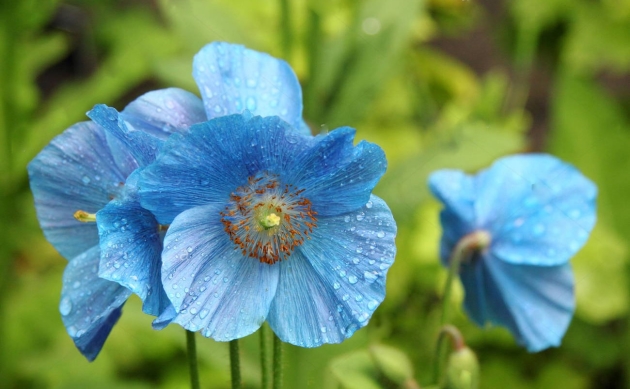

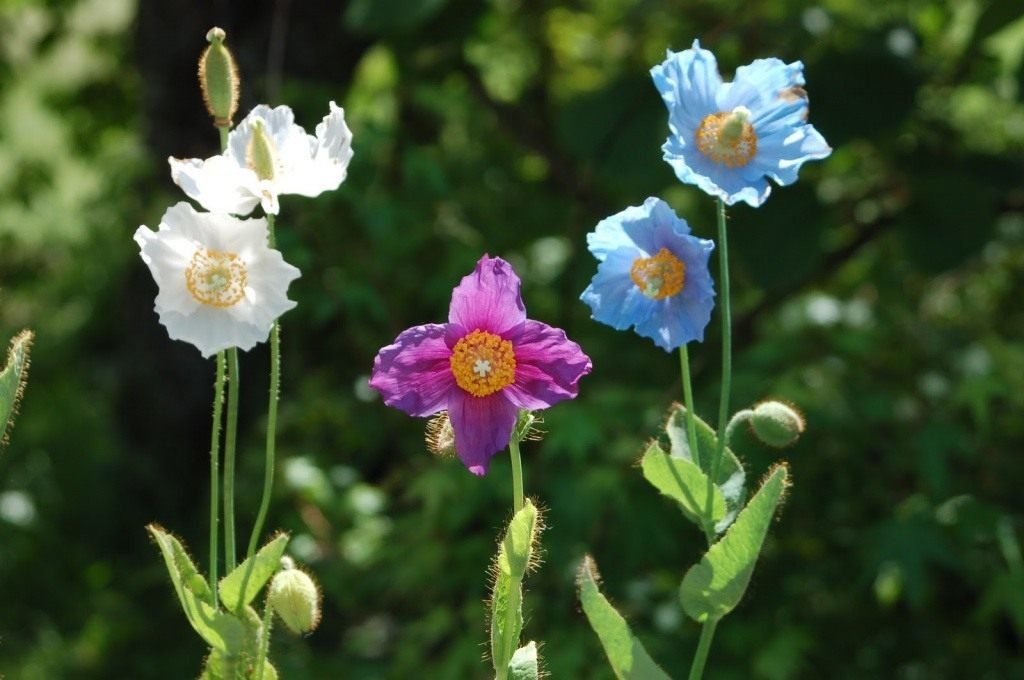

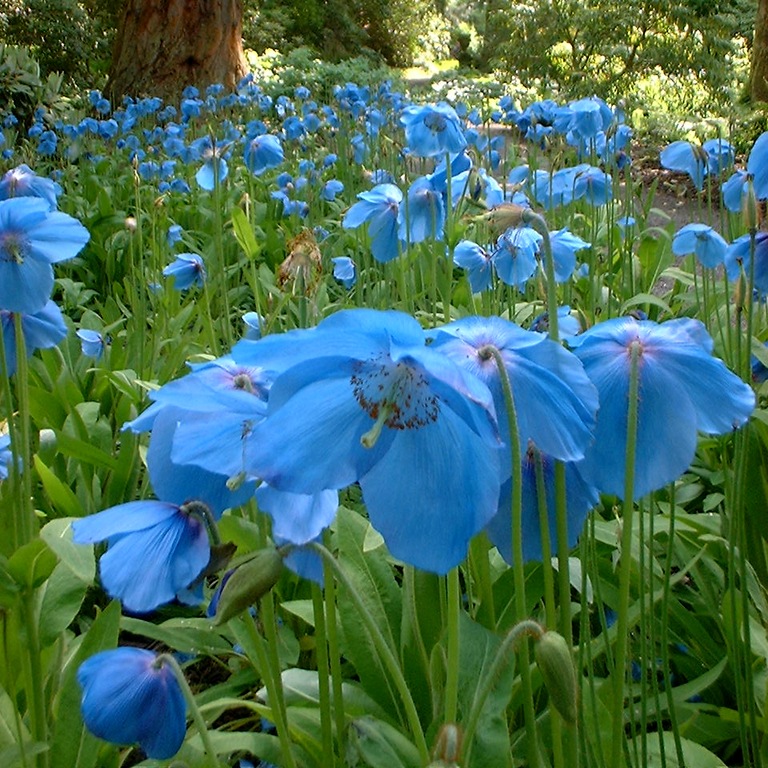
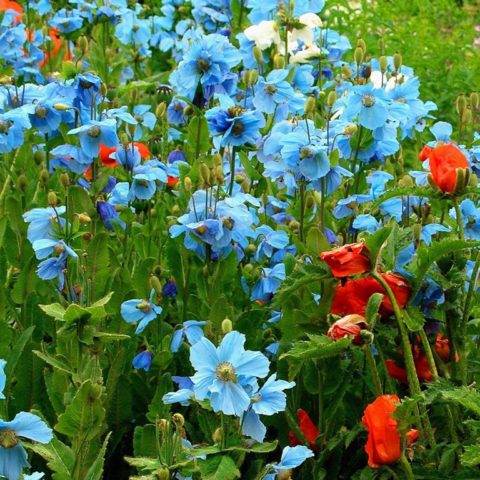
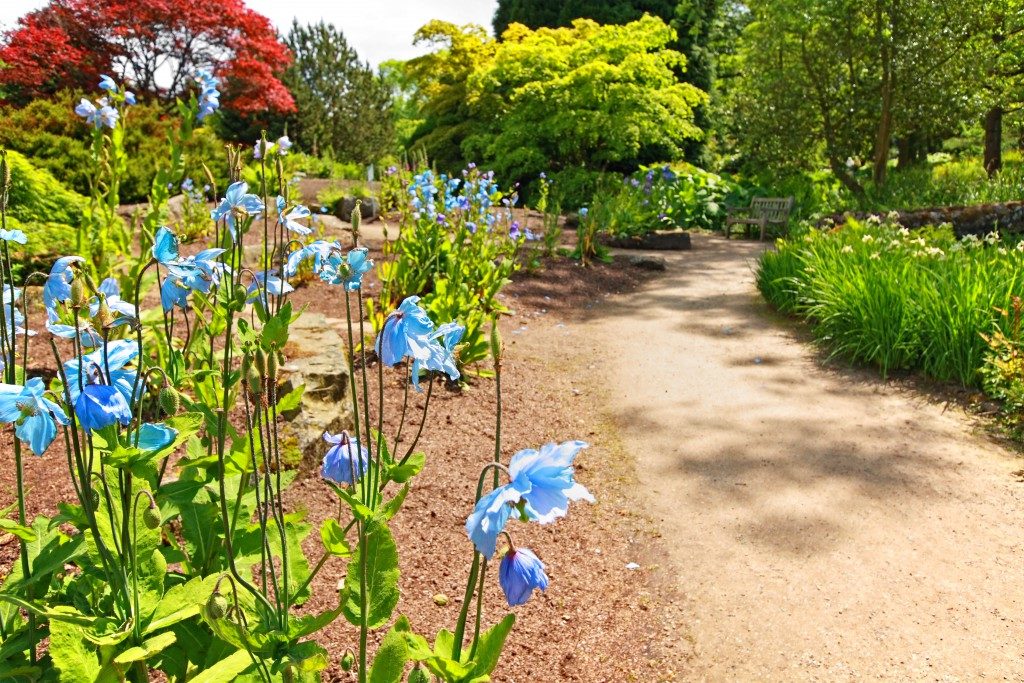
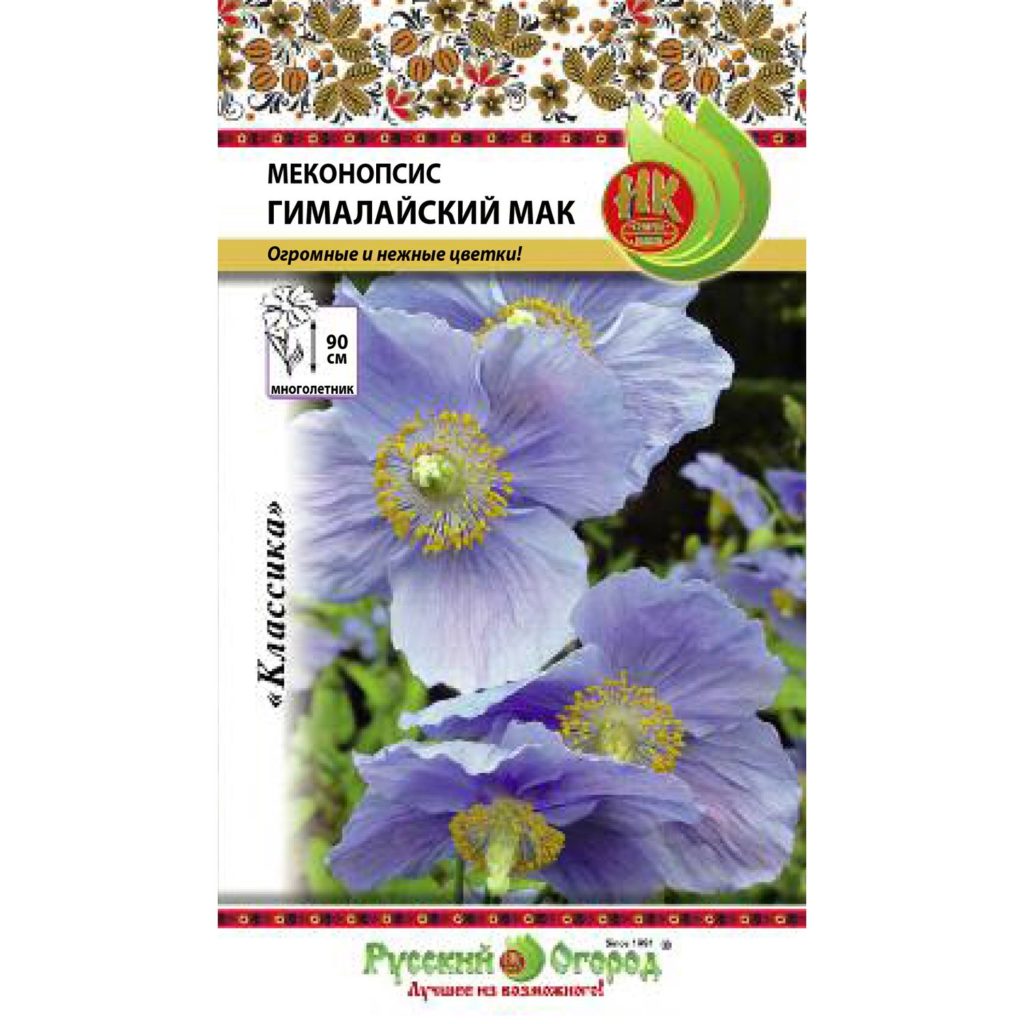
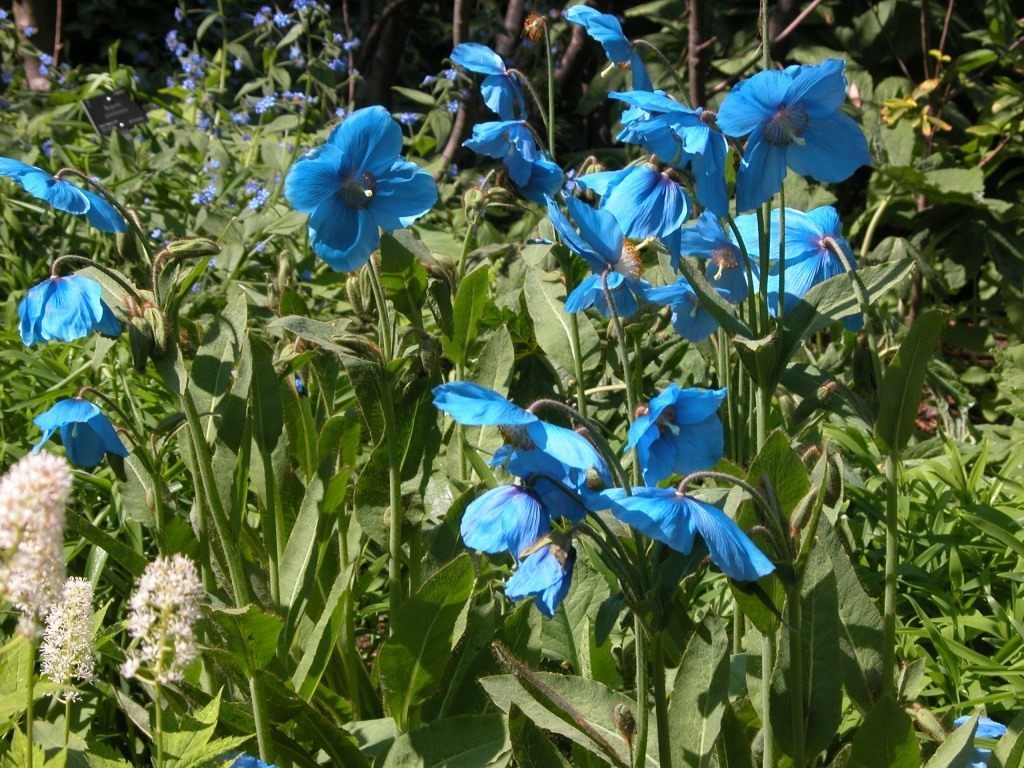
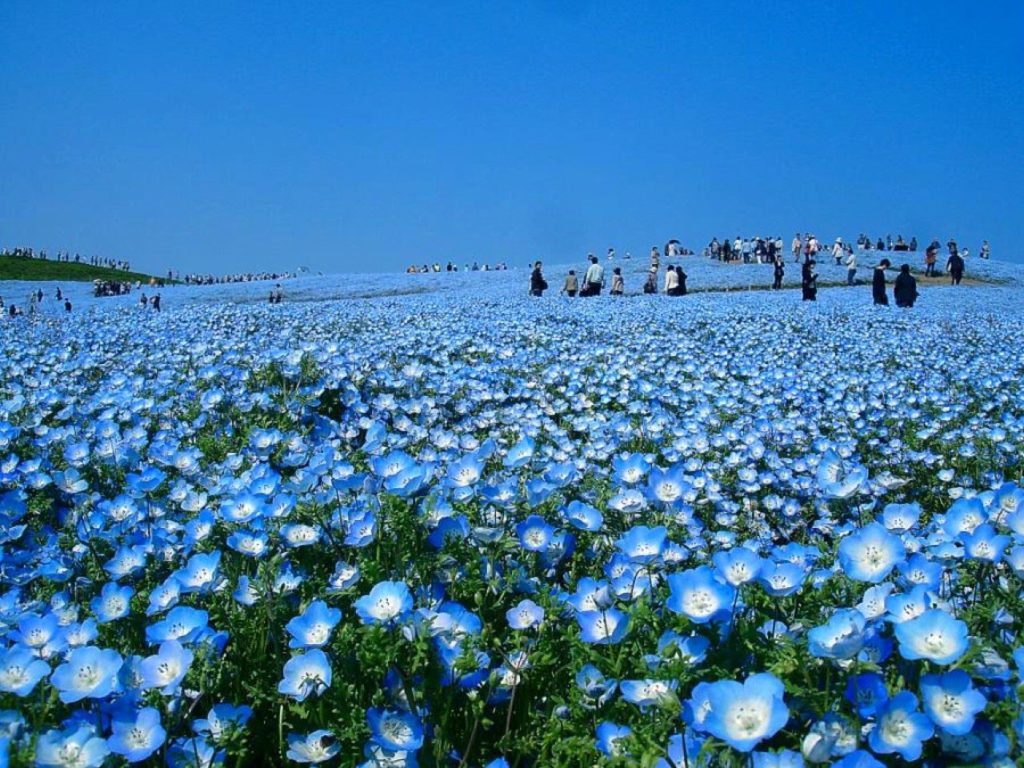
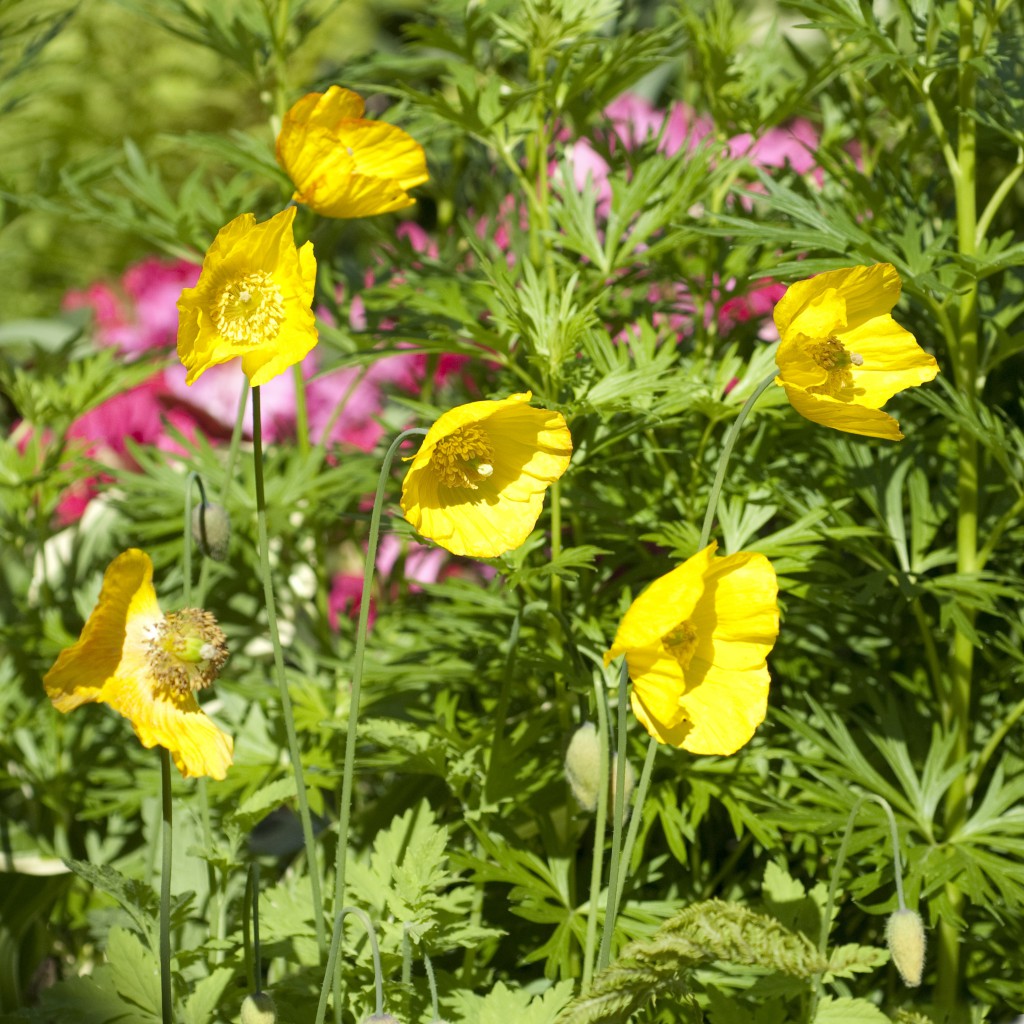
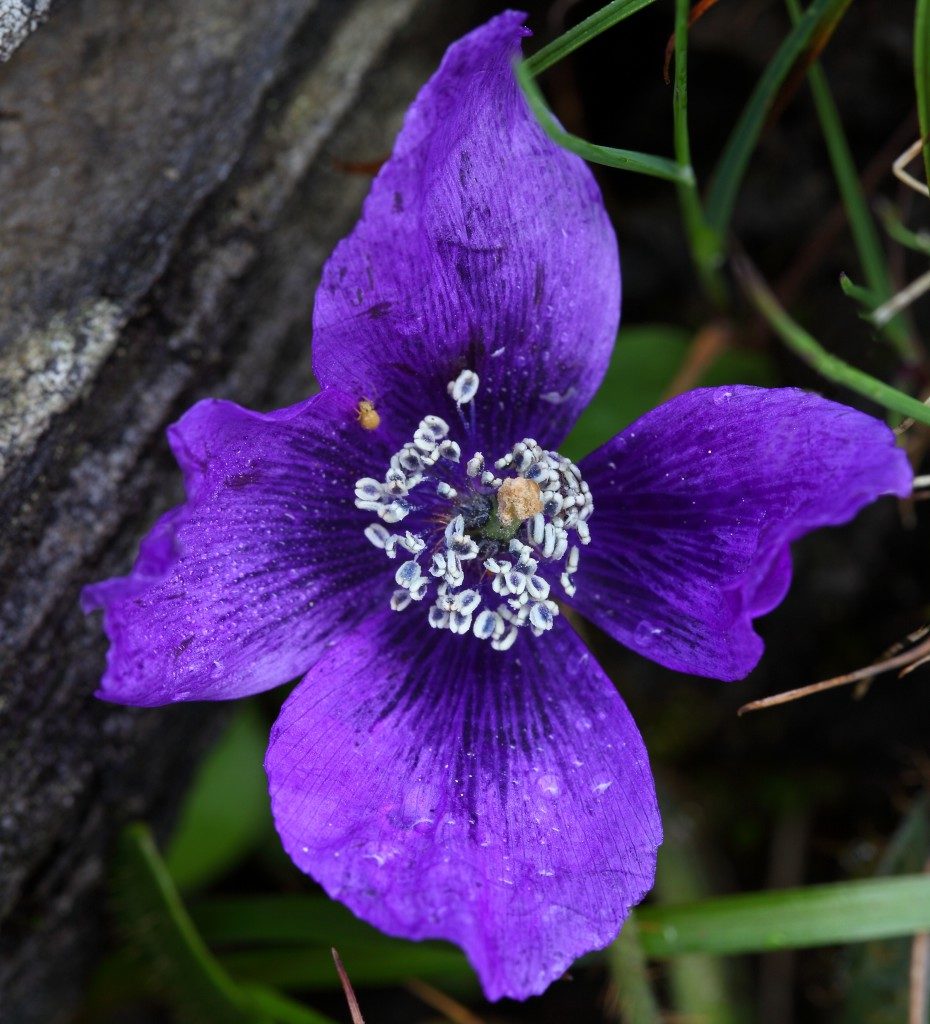












 Start a discussion ...
Start a discussion ...